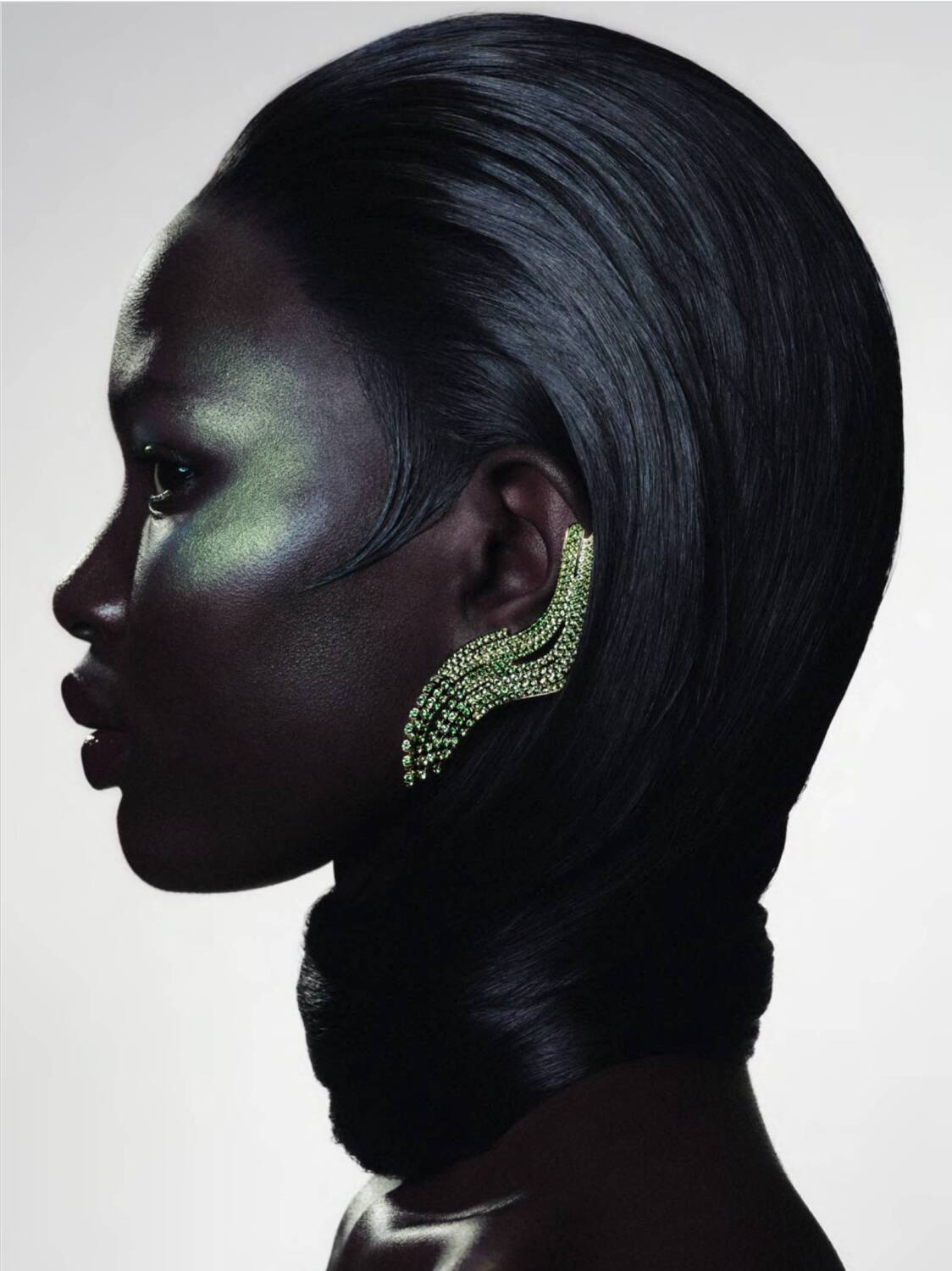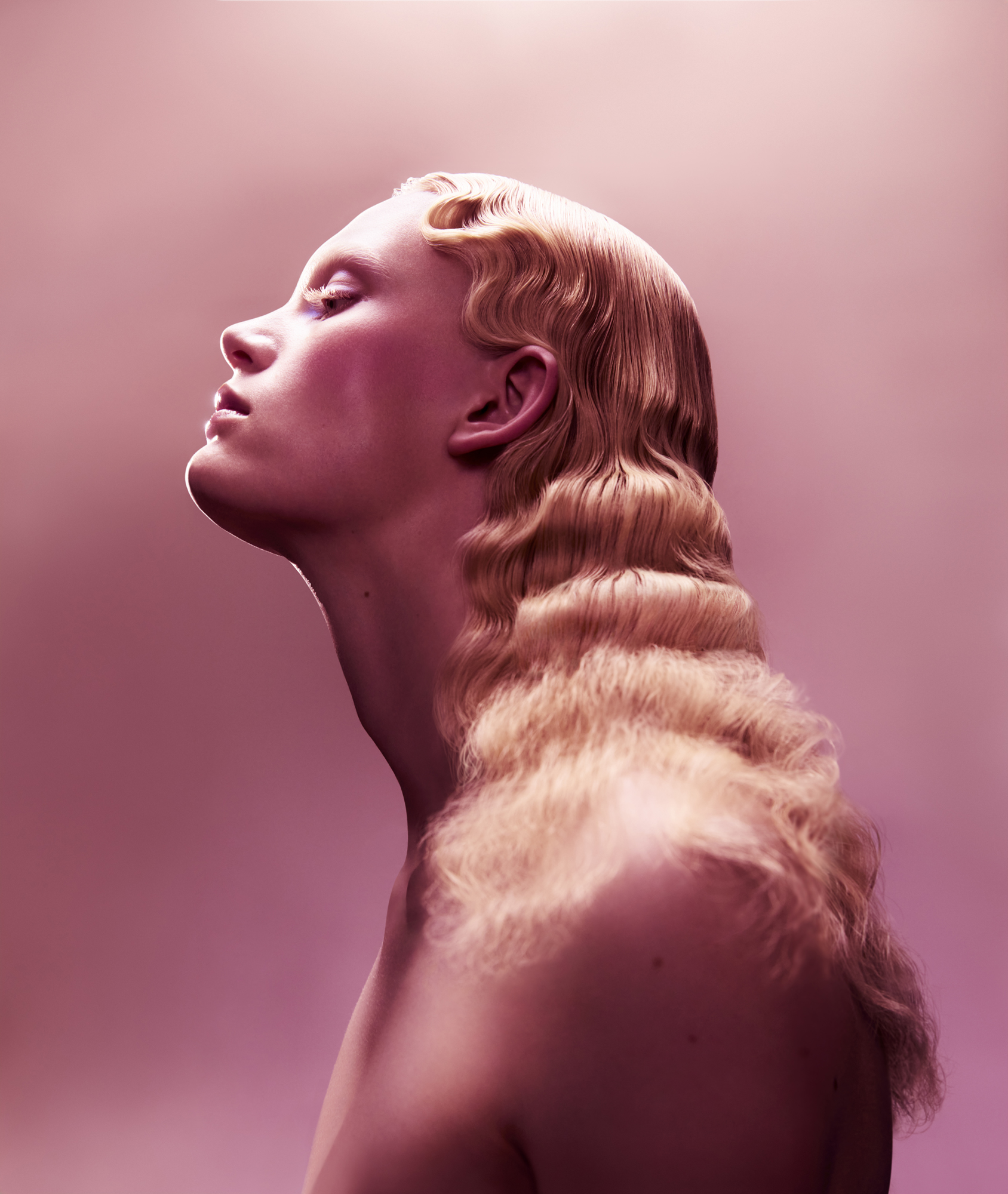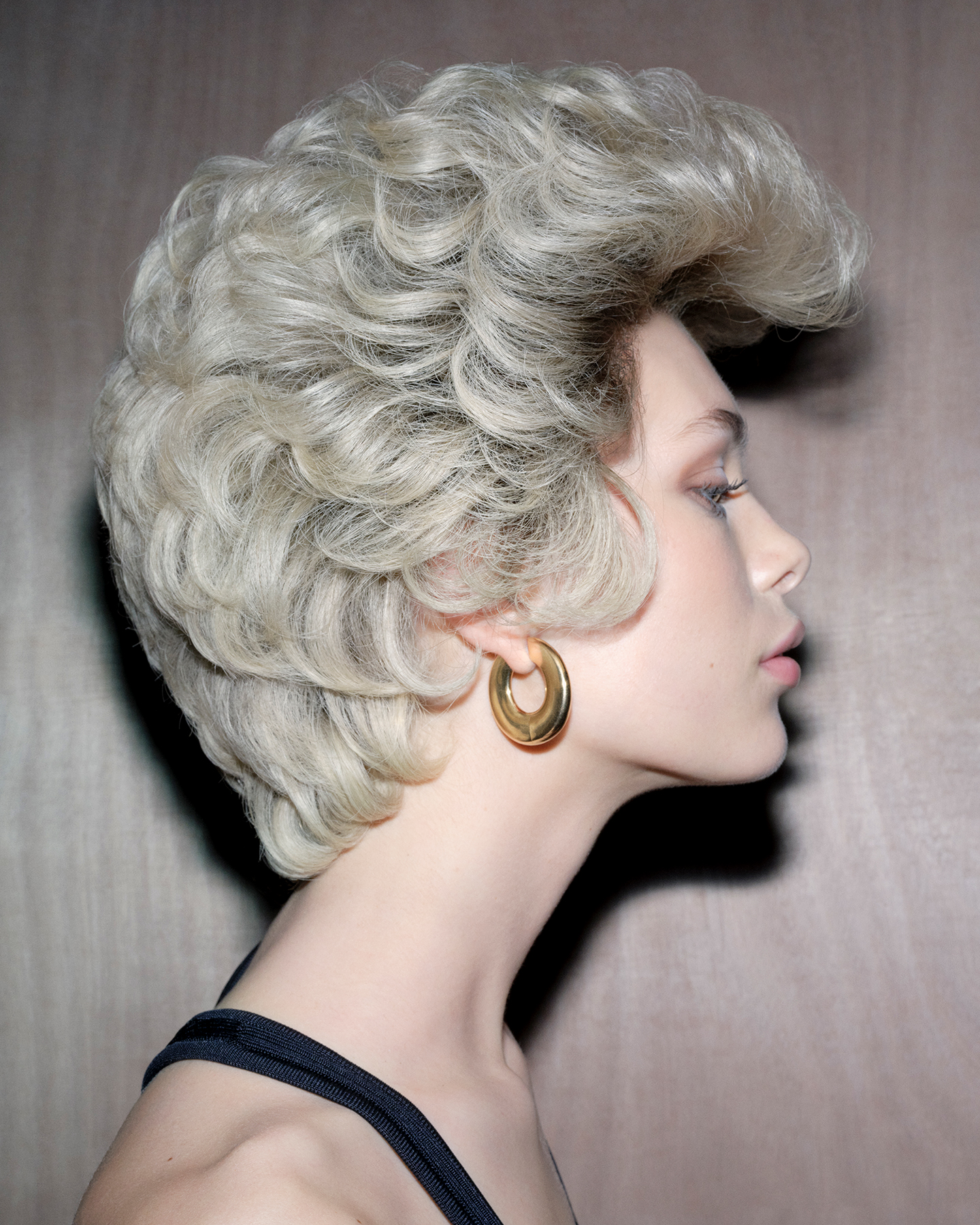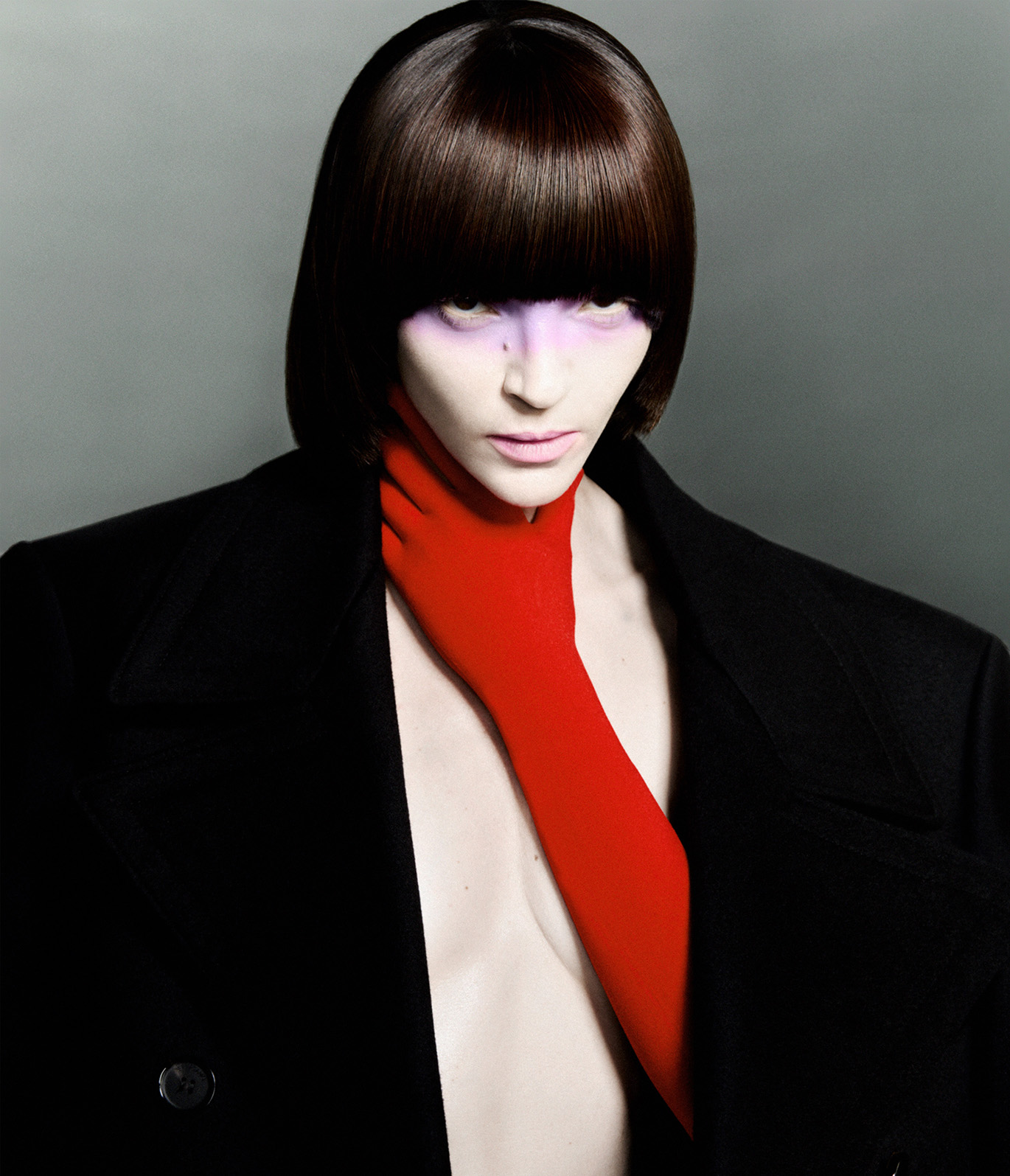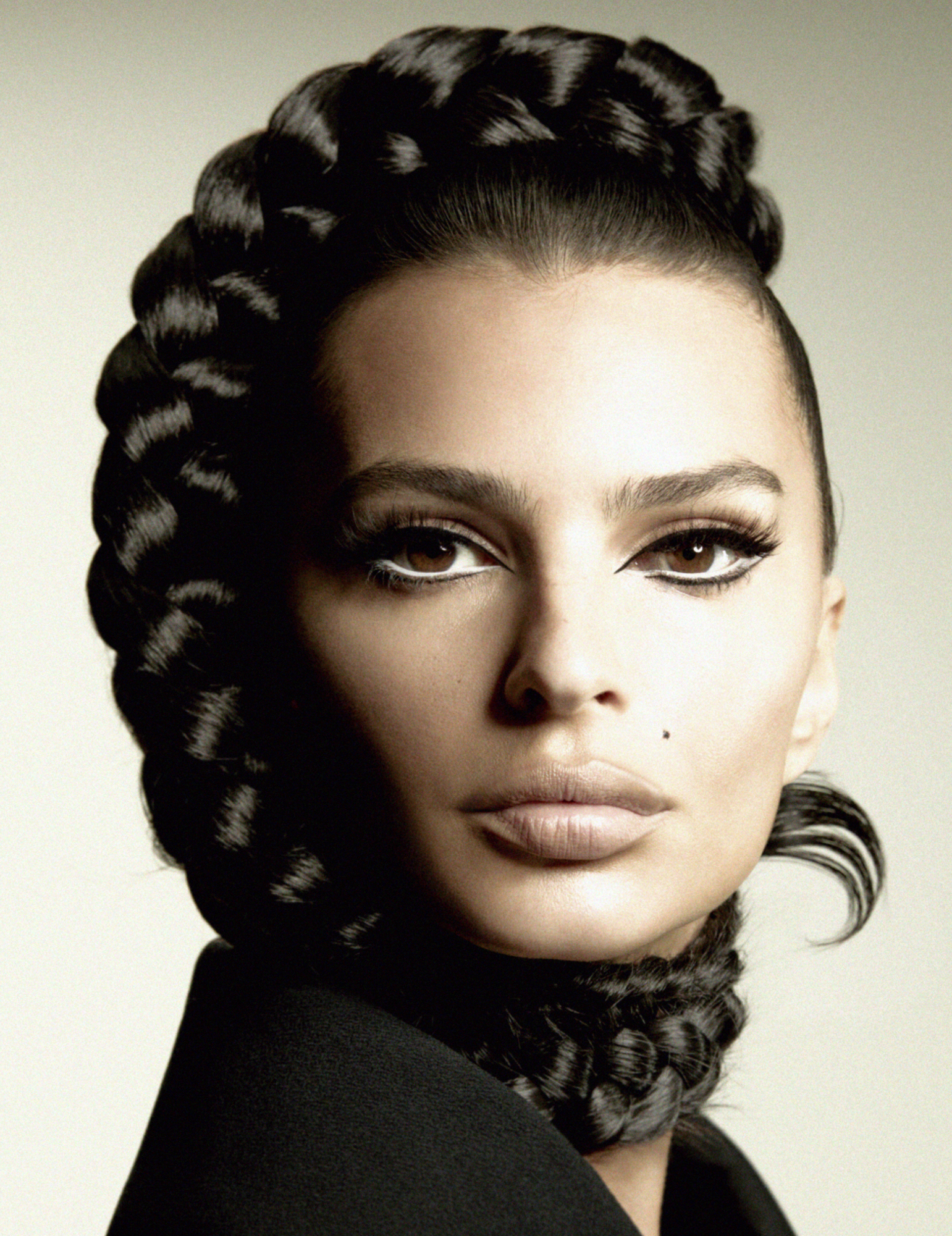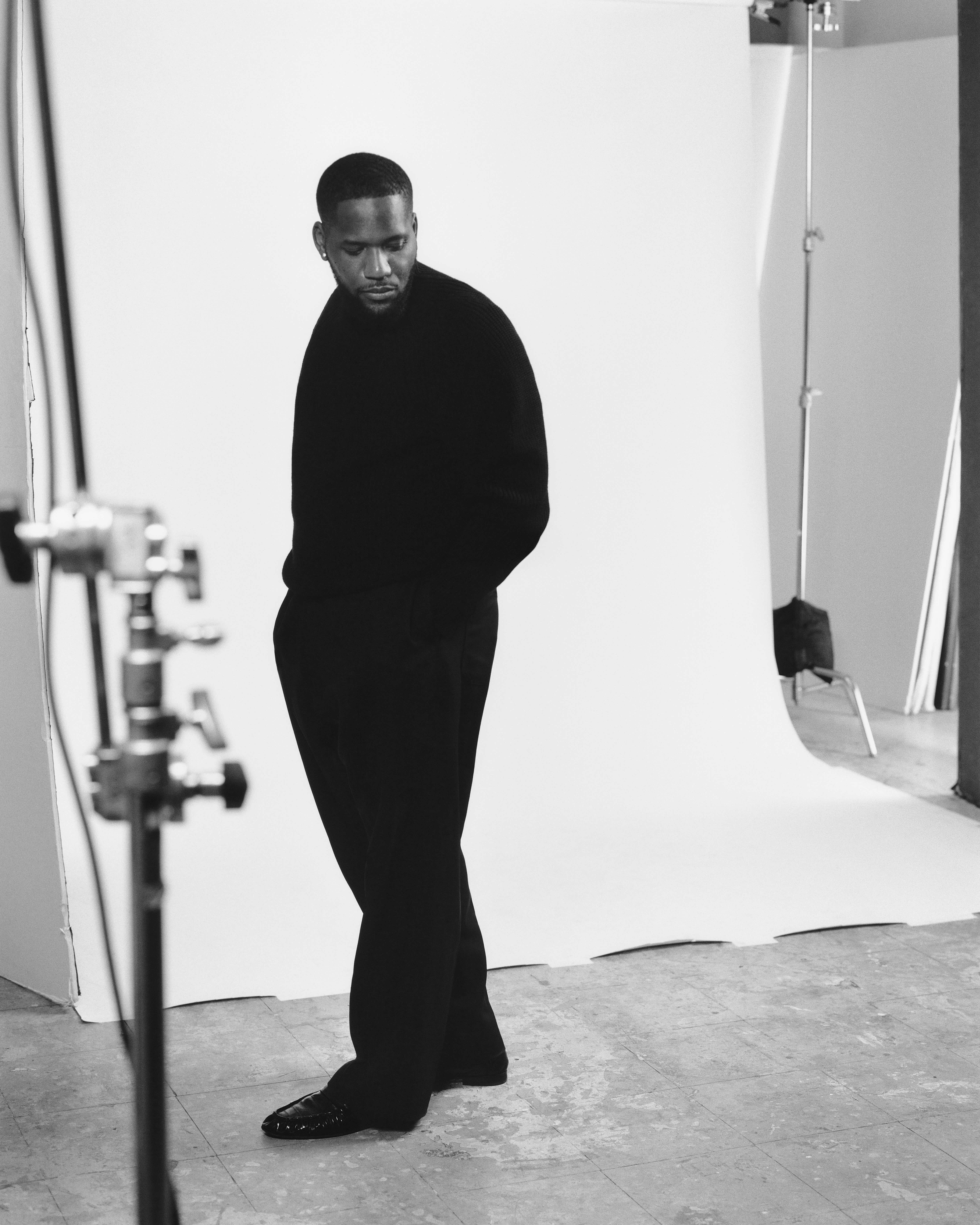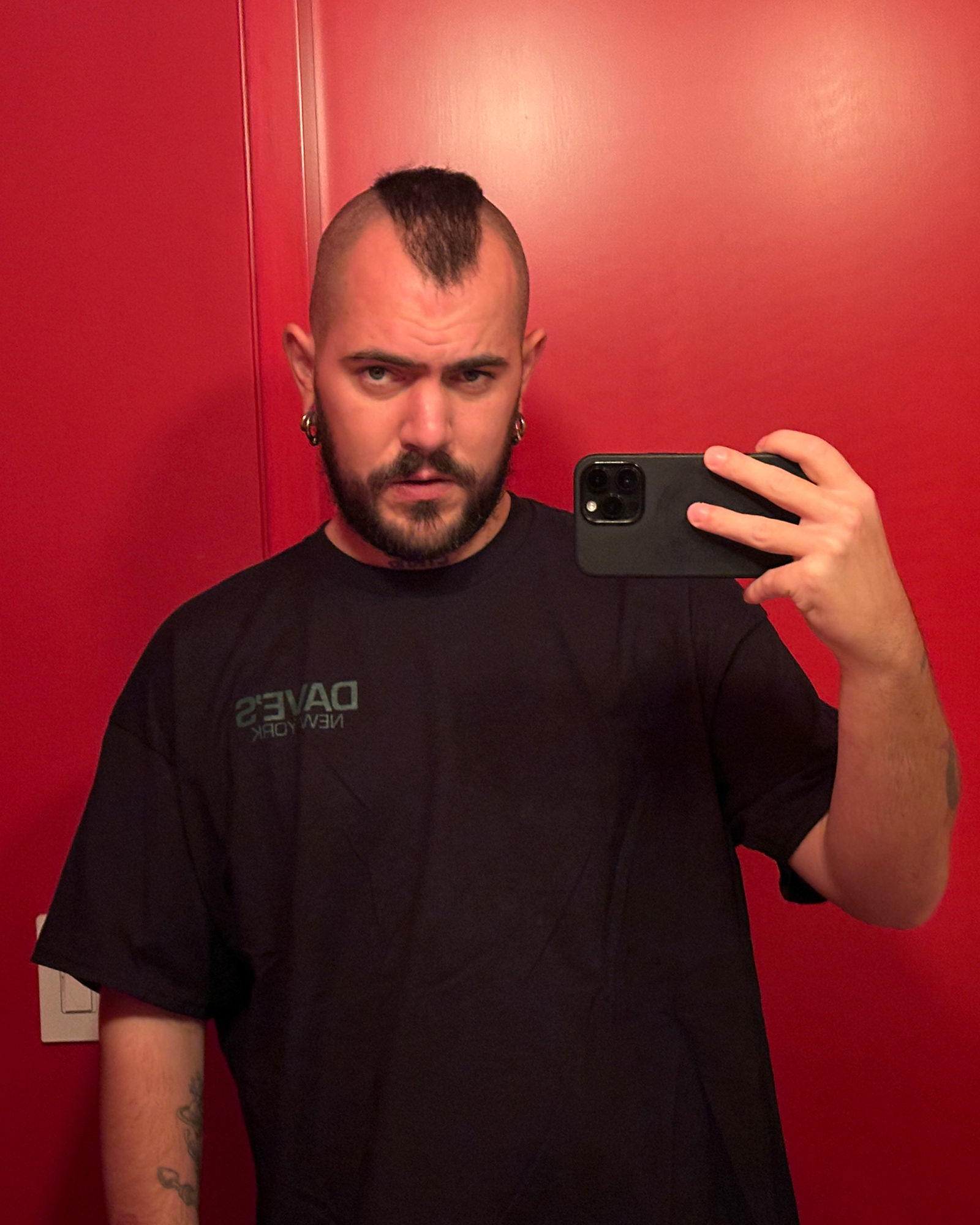Known as a leading hair artist in the industry, Olivier Schawalder has mastered the intimate relationship between craft and play. As a teen, the Swiss-born, Paris-based artist had no intentions to work but was obliged to choose a career path. Always fascinated by hair considering his mother’s weekly visits to the salon, he was introduced to the world of the hair professional when his cousin secured an internship as a hairdresser, and ultimately gravitated towards the career as a means of compromise. In the salon, he could fulfill a deep desire to have fun while working. This impetus to play has suffused Schawalder’s craftsmanship as he transforms coiffures into whimsical shapes and abstractions that push forward visual narratives. With expertise in wig making, he’s helmed hair for Dior, Mugler, Kiko Kostadinov, and Victor & Rolf while contributing to the covers of cult magazines like System Beauty, Beauty Papers, and d la Repubblica. His creative intuition and timeliness have allowed him to foster collaborations with stylists and photographers like Carlijn Jacobs, Suzanne Koller, and David Sims. Models.com contributor Nia Shumake spoke with the hair artist regarding his upbringing, muses, obsessions, and his advice to hair stylists looking to work in the editorial space.
What were your earliest memories involving hair, and what made you fall in love with hair as a teen?
I think the first memory I have is with my mom. She was really into hair because she hated her hair her whole life. My mom has very curly hair, and her fight in life was to have it straight. In the 80s, she would go once a week to the hairdresser to have it relaxed, blow-dried, then straightened. My first memories of hair were going with her to the hair salon and watching [the stylist] for an hour. I’ve always loved the texture, touching it, and the way it feels when you play with it.
When did you decide to become a hairstylist?
When I was a teenager, I was a real punk. My plan was not to work at all initially, but then coming from where I’m from, people obliged me to choose something. My dear cousin started an internship as a hairdresser. [I thought] she looks like she having fun, maybe I should try, and [doing hair] doesn’t feel like working. It was more like playing. So, I tried and got hired in the same salon as her to pursue that three-year internship. I’ve never stopped after that.
Did your experiences in Switzerland at all inform how you approach hair?
Oh, no, it didn’t influence me at all, Switzerland is all about nature. There was no field, no fashion— It’s not the vibe. It didn’t really influence me because when I started, I had a lot to learn. When I left for Japan in 2004, I left because I was really into the culture. If something influenced me in my career, it would be maybe more Japan over everything. Initially, I wanted to go there for a year, but it ended up being seven years. What I’ve learned in Japan is more a philosophy of being. How you keep being focused, how you’re punctual, how you observe what you’re around. [I learned to observe people and think about] what they do, what they say, and how to react to that. I also learned how remaining calm helps in most situations. When it comes to hair and wigs, I learned by myself. I never took any classes, and I learned by doing.
What does that process look like when you’re teaching yourself?
You sit in your atelier, and of course, if you need to know something, you can quickly find out how. [However] even if you look at the tutorial, it doesn’t [mean] that you’ll be able to do it. For me, it’s more sitting in my atelier and playing.
What have been the most pivotal moments in your career?
I think the moment I met Carine Roitfield back in 2011. She was the first [person] who saw something in me. She put me on shoots with Karl Lagerfeld and Kim Kardashian, and I was so nervous. My first editorial for Italian Vogue was a turning point for me [as well because] I found exactly what I loved in beauty. There’s a [cover] I did with Bella Hadid where I gave her short hair for Pop Magazine with Carlijn Jacobs. The Mugler S/S 22 video was also a turning point where I gave striped wigs to many people. There are so many other people who have influenced me, like working with Suzanne Koller or David Sims. Almost every week, something is happening.
“…Beauty means confidence. Beauty is showing the real you and not hiding behind something.”
How do you think hair pushes forward the story for an editorial?
I feel like hair on a shoot is almost like salt and pepper, it’s just like spice. You can have the most beautiful clothes on the best model, and it’s almost like the end of the story. When the hair is good, usually, it’s a good shoot. That’s why it may be probably one of the hardest jobs in the industry, because it’s so important. On set, if something doesn’t work or is wrong, everyone will point at the hair. Even if it’s not the hair. Sometimes it’s the light and sometimes it’s the clothes or something. The first thing [people] see is hair, so if something is not working, they will point at you. You have to come up with a plan B very quickly and maybe it’s not your fault. [However], when someone is pointing at you, you need to be ready to know what to say and what to do.
I [usually] prep what they [my clients] want, but I also have other [options]. You can’t really go on set with one thing. People want options and I also want options. When it comes to wigs, you always need two to four options. When you come on set and you’re ready, the client, the stylist, or the photographer feels more comfortable because they can see that you thought about what to do and that you spent a day prepping for that.
You’ve worked on shows like Mugler and Viktor & Rolf, what do you most like about leading a team backstage?
I used to be terrified because there were a lot of girls and I’m a perfectionist. Nowadays, I enjoy it because I adore my team. I adore the people who work with me because some of them have been there for a few years now. I got to know them, and I’m grateful they are there because I couldn’t make it without all those people and their help. I think the first thing I love about leading the show is the fact that I’m able to see them all at the same time. I also love the energy—when you’re on shows, there’s so much stress and so much tension sometimes. But when you get to the point that you see that it’s running and working, the energy is so great. I’m not a monster, I don’t shout at people. I want to have people not afraid of me — I want people to give their best and by giving them the best, I want to be a nice guy. I’m happy to work with creatives like Gabrielle Sade, Melissa Nerovique, and Hyacintha Faustino.
What are some of your references or influences at the moment?
I’m obsessed with the new FKA twigs; I listen to her about 50 times a day. I’m reading a book about Greek mythology that I found very inspiring. I’ve loved it since I was a child, and I also studied astrology for a minute. When you read about Greek mythology and astrology, everything suddenly makes sense.
What is your process for creating new styles?
On every shoot, I need a conversation with everyone: the director, stylist, photographer, and I need to sit down and talk about what to do. Then, when I have more of an idea, I start to do what I think we should do. Most of the time, something else comes up, and that thing usually wins. I need to play and I also need to see the girl and her facial features. I need to see who this girl is because not all models are actresses. Most of the time I’m [creating] on the spot because I work quickly – I don’t spend four hours doing something. I can make something in five minutes, and that little thing will change the whole image.
Do you have any muses or models that you love working with?
Guinevere Van Seenus – I adore. The first time we worked together was for an editorial with Paolo Roversi. By talking to her, I felt that we were so alike, and physically, I found her so inspiring. I adore Kristen McMenamy and her hair, and what she brings on set. I love working with Maggie Maurer who’s someone that understands what I do a hundred percent. She became friends with my boyfriend and me, and whenever we have something, we always think about her. I love working with Mariacarla because everything she gives is incredible and women like Anja Rubik. [They’re] the kind of women who I feel are interested in what you do and they’re interested in how they will look. They want to be part of the story. What they have in common is when they come to my chair they will sit and be quiet. They know I’m not like a talker. When they feel that it’s the end, then we start to talk and have coffee, and we have a pleasant time. During the [time in my chair,] it’s really something I’ve noticed without asking them.
You recently worked on a cover story for System Beauty’s Fall 2024 issue. How was it like approaching beauty in a minimalist and maximalist way?
Well, that wasn’t planned at all. I loved working with Carlijn, Katie (Burnett), and Yadim. It was literally only us, and you get inspired by one another. It’s always important to watch what the other one is doing. Sometimes, I work with people and it doesn’t work because it’s not a team. So many people just want to do their thing and don’t care about what you want to do. I adapt myself to other people, and I expect people to do the same. [Collaborating on shoots] is a conversation and an understanding between people.
How have you managed to educate yourself on working with diverse hair textures?
Believe it or not, I learned in Japan. When I was in Japan, I met one of my best friends who was from Canada and Eritrean. She was really struggling in Japan [finding a hair salon]. When I met her, I thought maybe I could do [your hair] if you let me, and we became best friends. I gave her all the hairstyles that you could possibly imagine. She was into it, we were playing. I love her hair texture.
What does beauty mean to you?
I think beauty means confidence. Beauty is showing the real you and not hiding behind something. It’s when I see someone who’s proud, proud of himself, proud of what he did not in an arrogant way. Someone who is happy with what he’s doing, what he did, or what he will do.
What advice would you give to a hairstylist who wants to move from a traditional salon to the fashion industry?
I’ve noticed that a lot of people are almost ashamed of being in a salon. So many people are assisting and they jumped into the scene without knowing many things like cutting— you don’t learn how to cut in a year. It takes a long, long time until you’re confident. The first piece of advice is not to be ashamed of that, there’s so much value in having worked in a salon for years. They [those who’ve worked in salons] will always be a little bit better than the others. If they [hair stylists] really want to go into fashion, there’s always this moment where they need to be brave enough to jump in. Don’t be scared to try, it might be a whole new career opening up, and they will always have something that not a lot of people can pretend to have the skills! They can always go back to the salon because they have skills, they know how to cut and color hair, and that is a huge power! But if you don’t try, you will never know. Nothing in life is definitive. Most of the time, I see people working in a salon, and they are afraid to go into fashion because they are afraid of not making enough money to leave or to support themselves. There’s the rent and there’s all of this, and it’s scary because I was there too. But at some point, you have to dive into it. You can always do a couple of haircuts to make a living, but at some point, you have to jump.
When you were assisting and interning, what was the most valuable lesson you learned from that experience?
If you look down on people, they will eat you alive. When I understood that, I [started] to look people in the eye. It shows your confidence. It shows you’re ready, and you’re not there to suffer— you’re there to learn and to make beautiful things.
